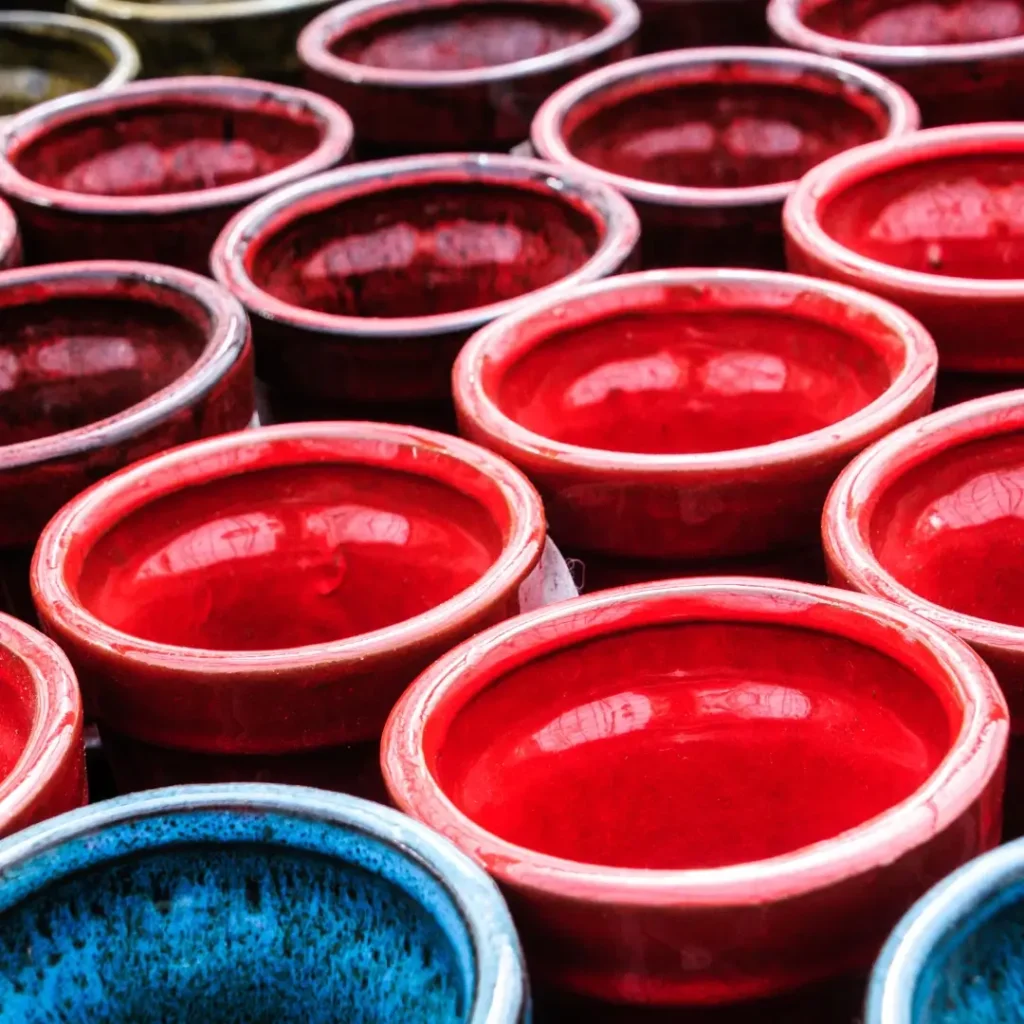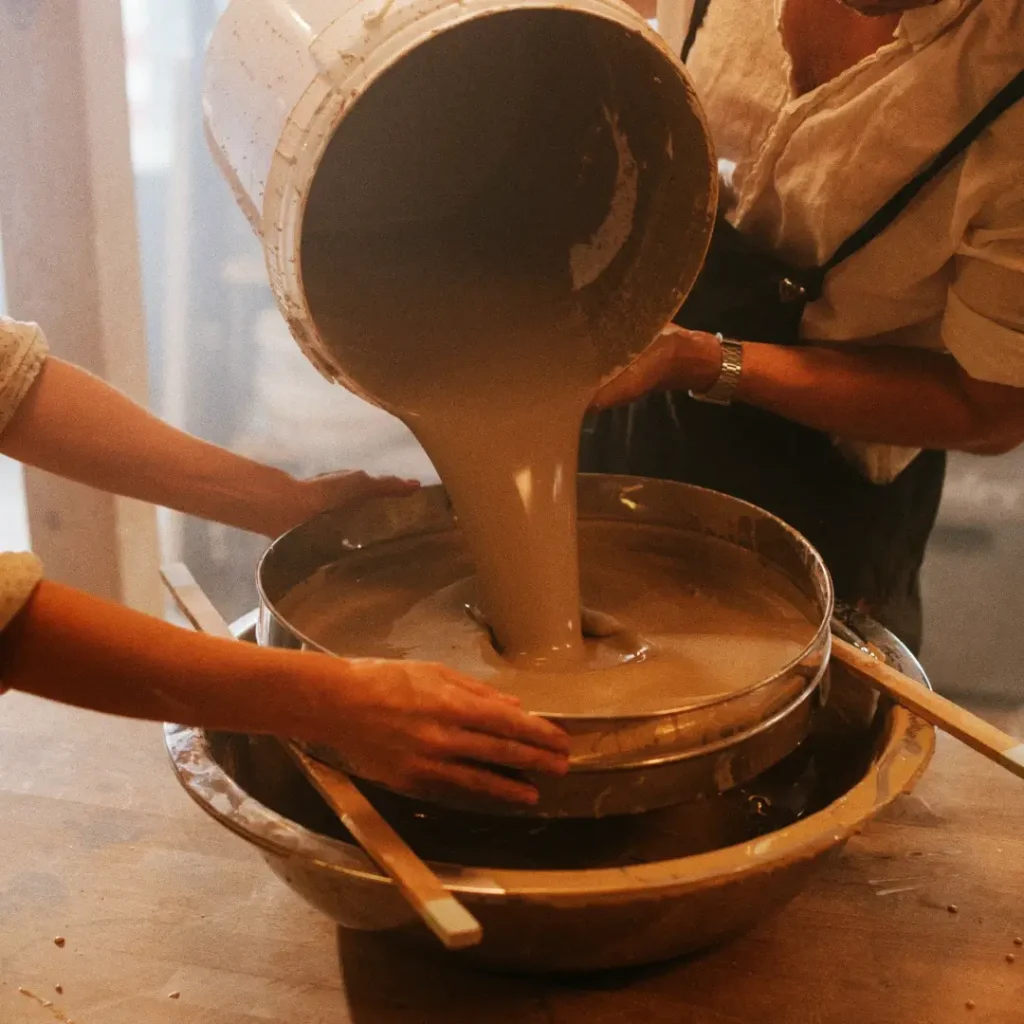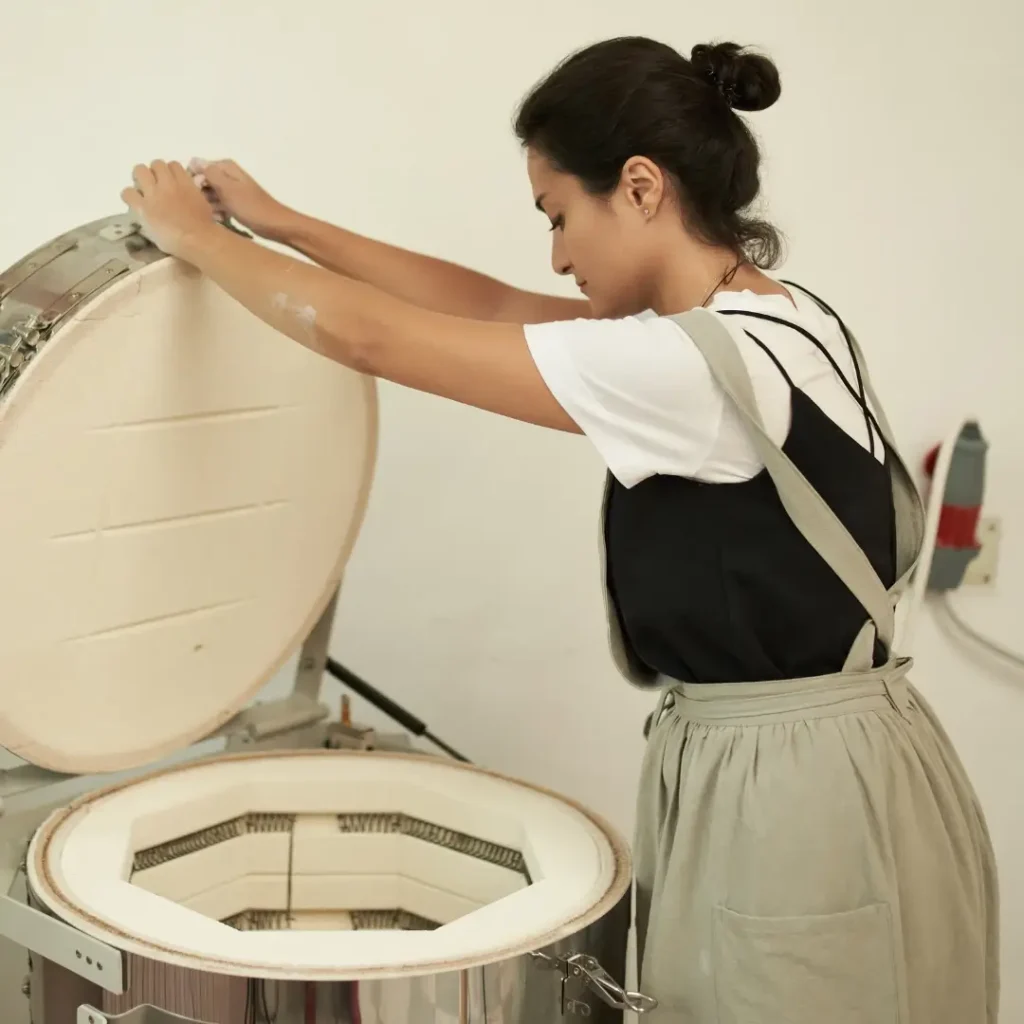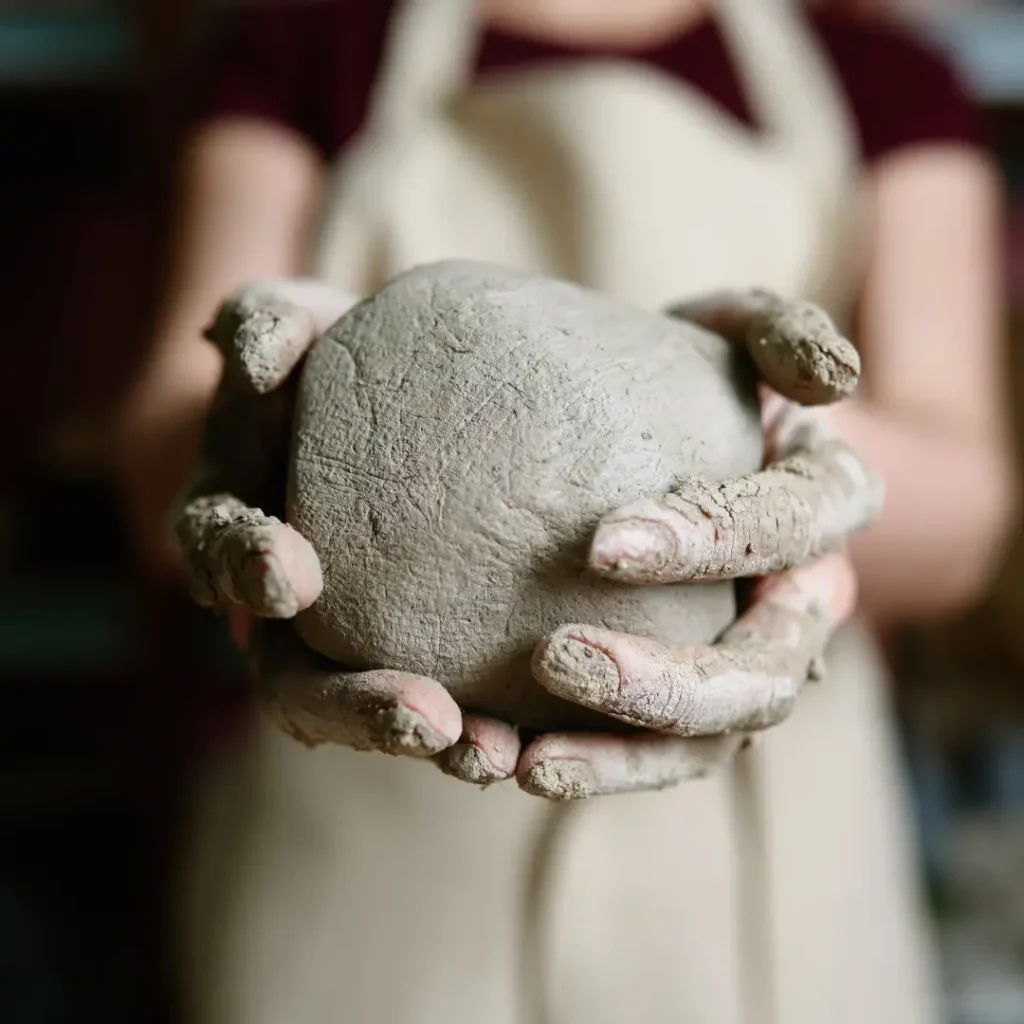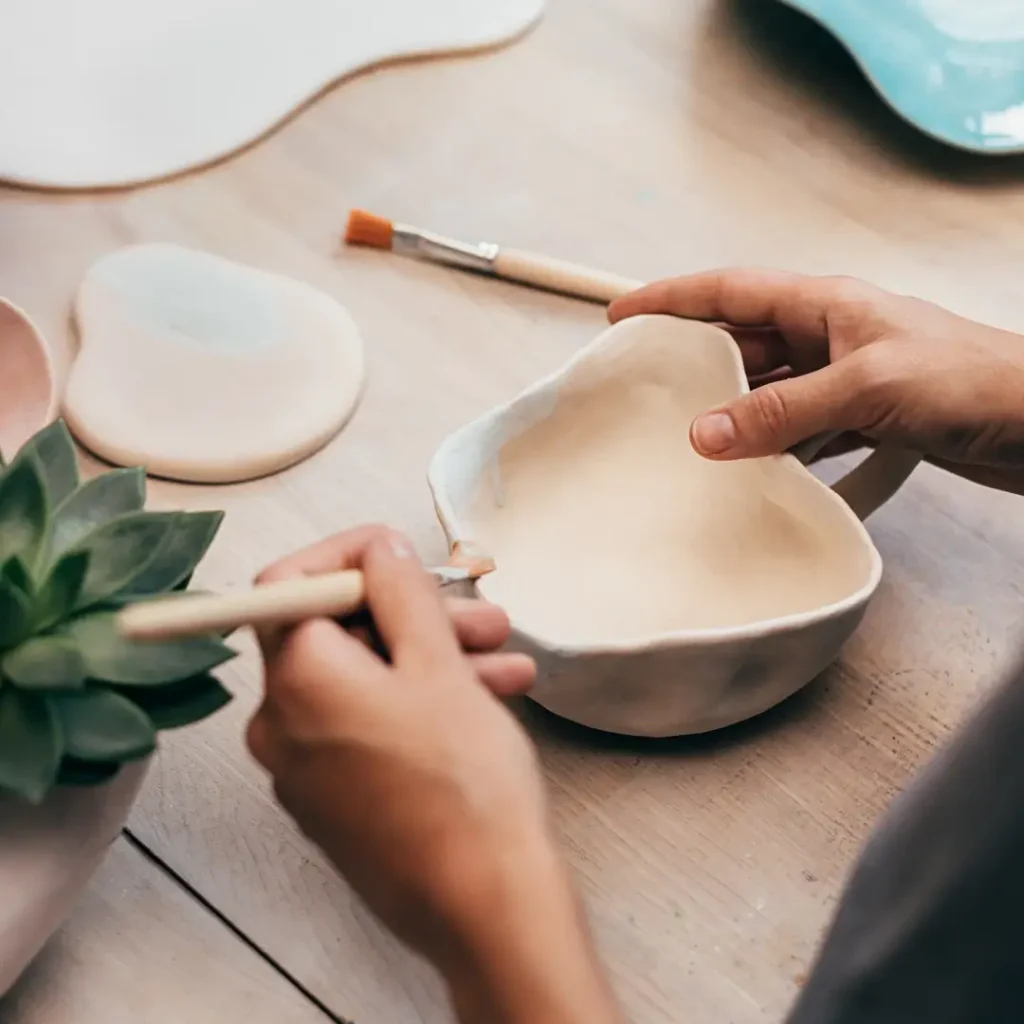Pottery: Learn about this art in clay
In the intertwined world of art and the crafts the pottery emerges as a millenary practice that transforms the humble clay at ceramic pieces of incomparable beauty. From pots even delicate works of art the ancient techniques modeling bring the clay to life, revealing the deep connection between the potter and his creation.
This art, which combines skill, patience and creativity, continues to fascinate and evolve, keeping alive a rich cultural heritage.

What is pottery
The pottery is a ancient art which dates back to the beginnings of human civilization, consisting of the process of creating objects from clay and other ceramic materials that are hardened by heat. This art not only includes the production of utensils and containers for everyday use, but also pieces of great aesthetic and cultural value, reflecting the traditions and creativity of people throughout history.
The clayThe raw material of pottery is characterized by its malleability, which allows potters to shape their visions with hands and tools until the desired piece is achieved. Once modeled, the clay is subjected to high temperatures in a kiln, transforming it into a hard and resistant object, capable of lasting through time.
Pottery is distinguished by a wide range of techniques and styles, from the creation by hand to the use of the potter’s wheel which allows for a more uniform and faster elaboration of the pieces. Decoration plays a fundamental role in this art, where potters apply glazes, engravings and paints to embellish and personalize each piece, turning it into a reflection of their skill and artistic vision.
Throughout the centuries, pottery has been a reflection of cultures and eras, from the utilitarian ceramics of ancient civilizations to intricate contemporary works of art. This art has witnessed and been part of human evolution, adapting to technological and social changes, yet maintaining its essence of connection to the land and creativity.
Pottery, more than a manufacturing technique, is an artistic expression that links human beings with their natural environment and their ability to transform raw materials into objects of beauty and functionality. This art continues to evolve, inspiring new generations of potters who explore the infinite possibilities offered by clay, keeping alive the flame of one of humanity’s oldest art forms.
Difference between ceramics and pottery
The pottery and the ceramics are two terms that are often used interchangeably, but have distinct differences in their use and production.
Pottery is generally associated with objects made exclusively of clay that are functional, such as containers for food or beverages and pots for plants.
Ceramics, on the other hand, have a wider range of uses in various industries and can be both functional and non-functional, ranging from the creation of art and sculptures to applications in the aerospace industry for high temperature components and insulators in electronic components.
In terms of production, pottery is made by firing clay or ceramic materials with a heat source, usually in an electric or gas kiln, within a specific temperature range.
Pottery, on the other hand, can be produced from a variety of materials, making it more versatile compared to pottery, which is more limited in its use due to the specific nature of the clay.
Texture also differs between pottery and ceramics; pottery, being made of clay, tends to have a coarser finish and rougher texture, while ceramics, due to the variety of materials, tend to have a smoother construction.
In addition, some types of ceramics are more durable and drop resistant compared to traditional pottery made of clay, which is more prone to breakage.
This understanding of the differences not only enriches the appreciation of these ancient art forms, but also allows us to recognize and value the diversity and complexity of the techniques and materials used in their creation.

How pottery was discovered: Its origin
The discovery of the pottery one of the oldest human inventions, predating even the Neolithic period. This art, which consists of shaping objects from clay and other raw materials, can be traced back to objects such as the Venus figurine from Dolní Věstonice from the Gravettian culture in the Czech Republic, dated between 29,000 and 25,000 BC.
However, the oldest known ceramic vessels were discovered in Jiangxi, China, and date from around 18,000 B.C., suggesting that the practice of pottery making was already well established during early human settlement.
These early objects show the diversity and complexity of the techniques and materials used, and their evolution over time reflects the cultural and technological developments of ancient societies.
The pottery not only served utilitarian purposes, but was also considered an art form, especially in finer pieces that revealed sophisticated firing techniques and exquisite painting skills.

Buy handmade Spanish ceramics
Fortunately, there are artisans who make pieces preserving the ancient traditions of pottery in the Iberian Peninsula.
You can see their work here.
The durability of ceramics makes them a key material for archaeological study, providing valuable information about ancient cultures, from their eating habits to their religious rituals and trade networks.
For example, pottery has been instrumental in dating archaeological sites, especially in places where no written records are found, such as on the island of Crete, where the excavation of the Palace of Knossos was dated based on imported Egyptian artifacts found there, including pottery.
Pottery is traditionally divided into three main types: earthenware, stoneware and porcelain each with its own decoration and firing techniques. Throughout history, pottery has been both an expression of everyday needs and a manifestation of a society’s art and culture, reflecting artistic evolution within cultures and often revealing details of daily life.

Origin of the term potter
The origin of the word “potter” can be traced back to the Old English term “pott,” which referred to a vessel or container. The word “potter” itself originated as an occupational name for a person who made pots and other ceramic vessels. This craft was an essential part of everyday life in ancient and medieval societies for storing and cooking food, among other uses.
The verb form “to potter” also evolved, meaning to move around or occupy oneself in a leisurely, casual, or ineffective manner, possibly deriving from the meticulous and sometimes leisurely process of pot-making. Over time, “potter” became a common surname in English-speaking countries, reflecting the trade of pottery making as a family or ancestral occupation.
History of pottery
The history of pottery is as old as human civilization itself, dating back thousands of years. Pottery is one of the earliest forms of art and technology developed by humans. Here is a summary of its evolution over time:
Prehistory
– Paleolithic: Although the use of clay dates back to the Paleolithic, the first evidence of objects modeled in unfired clay appears in this period.
– Neolithic: With human settlement and the beginning of agriculture, pottery became a common practice for the creation of vessels needed to store and cook food. The first pieces were simple and functional, with minimal decorations.
Seniority
– In various ancient civilizations such as Mesopotamia, Egypt, India, China, Mesoamerica and Greece, pottery reached a high level of sophistication. Techniques such as the potter’s wheel, controlled firing and various forms of decoration, including painting, engraving and glazing, were developed.
– ChinaThe development of porcelain during the Tang Dynasty (618-907 A.D.), known for its beauty and resistance.
– Ancient GreeceFamous for its pottery vessels decorated with mythological scenes and scenes of everyday life, highlighting styles such as geometric, geometric, and black figures and that of red figures.

Discover unique Greek reproductions
Fortunately, there are artisans who make reproductions identical to the classical works of art that were made in ancient Greece and are only found in museums, making them affordable.
Middle Ages
– In the Islamic world, ceramics reached a high level of artistry, with complex geometric and floral decorations, and techniques such as cuerda seca and metallic luster.
– In Europe, pottery focused more on functionality, although in some places such as Italy and Spain unique decorative styles were developed.
Renaissance and Modern and Contemporary Ages
– The renaissance of pottery in Europe was influenced by the revaluation of ancient techniques and styles, together with innovation in production and decoration methods.
– Industrialization brought mass production of ceramics, but it also brought about a revival of craft techniques in response to industrialized production.
– In the 20th century, art pottery gained recognition as an art form in its own right, with artists such as Bernard Leach and Shoji Hamada promoting the marriage of functionality with aesthetics.
Contemporary Pottery
– Today, pottery production ranges from mass production to parts of unique art. There is a growing interest in traditional and sustainable techniques, as well as experimentation with new materials and methods.
Pottery, in its essence, reflects the culture, needs and aesthetics of the societies in which it develops, being a tangible testimony of human history and its relationship with the materials of its environment.

The potter´s work
A potter is a craftsman who transforms the clay in objects of ceramics. The process is based on techniques that have been perfected over millennia. This handcrafted process ranges from the material selection to modeling and firing The process involves several stages that require skill and in-depth knowledge of the properties of the clay and the reactions to heat.
The first step in the work of the potter is the choice of clay. The color can vary greatly depending on the texture, plasticity and color desired for the final piece. Once selected, the artisan proceeds to preparing the clay. The process involves kneading it to eliminate air bubbles and achieve a uniform consistency, which is crucial to avoid imperfections or breakage during baking.
The modeling technique is where the potter’s creativity is most clearly manifested.
Using the potter’s wheel: The clay is turned on a potter’s wheel, a tool that allows the clay to be turned while it is molded with the hands, creating symmetrical shapes such as pots, plates or vases. However, not all pieces are made on the potter’s wheel; some are modeled by hand. The new design allows for a greater diversity of shapes and styles.
Once modeled, the piece must be dried slowly until it reaches a state known as ´leather hard´ , firm enough to be manipulated but still capable of absorbing a glaze without falling apart. The application of glazings and decorations not only adds beauty to the piece, but can also enhance its functionality, as in the case of the glazed ceramic which becomes impermeable.
The firing is the final step and one of the most critical in the pottery process. It is performed in a specialized kiln where the pieces are subjected to high temperatures that can exceed 1000°C. This process not only hardens the clay, transforming it into ceramic, but also fixes the glazes and decorations, revealing the final colors and textures. The atmosphere inside the kiln, whether oxidizing or reducing, plays a crucial role in the final result, and can significantly alter the colors and finishes of the pieces.
Pottery, as an artistic expression and craft, involves much more than the simple creation of utilitarian objects. It is a continuous dialogue with the subject mattera practice that requires patience, precision and a deep respect for traditions.. Each piece reflects not only the potter’s technical skill, but also his aesthetic vision and connection to an ancient cultural legacy.
In the next section, “How pottery is produced”, we will delve deeper into the technical details of each stage of the process, from the preparation of the clay to the firing techniques, offering a more technical and detailed view of how potters bring their creations to life. This journey through the potter’s workshop will reveal the secrets of an art that continues to fascinate and beautify our world.
How pottery is produced
The production of pottery is a handcrafted process that combines skill, tradition y technical knowledge. The transformation of a simple lump of clay into a ceramic object is an art that has been perfected over the centuries. The following are the fundamental stages in the creation of pottery:
The basis for any piece of pottery is the clay, a natural plastic material found in the earth. The selection of the right clay is crucial, as its characteristics will determine the quality and type of object that can be created. The preparation of the clay involves its purification and kneading to remove impurities and air bubbles, ensuring a homogeneous consistency.
Once the clay has been prepared, the potter begins the process of design and modeling. This stage can vary greatly depending on the technique used:
– Potter’s wheel: It allows to create symmetrical shapes by turning the clay while molding it with the hands.
– Hand modeling: For more organic or unique pieces, the clay is modeled without the use of mechanical tools.
Drying is a critical phase that must be carefully controlled to avoid deformation or cracking of the piece. The clay is allowed to rest until it reaches a state known as ‘leather hardness’, which indicates that it is ready to be bisqued or glazed.
The decoration can be performed at various stages of the process, but it is common to apply glazes after the first drying. Glazes not only add color and texture, but can also make the piece waterproof and suitable for everyday use.
The firing transforms the dried clay into hard, durable ceramics. This process takes place in a specialized kiln at temperatures that can exceed 1000°C. Firing is carried out in two main phases:
1. Bisque : A first firing that hardens the piece but leaves it porous so that it can receive glazes.
2. Glaze firing After applying the glaze, the piece is fired again at a higher temperature to vitrify the glaze , sealing the surface.
After firing, the pieces must cool slowly to avoid thermal shocks that could cause them to fracture. This process can last from several hours to days, depending on the size and thickness of the pieces.
This meticulous process of pottery production is a testament to the skill and the patience of the potter, who transforms natural materials into objects of beauty and utility. Each stage, from the preparation of the clay to the final firing, requires a deep knowledge of the material and careful attention to detail, making each piece of pottery a unique work of art.
We hope you liked this post. It will help us if you share it on social networks 👍.
Latest publications:
